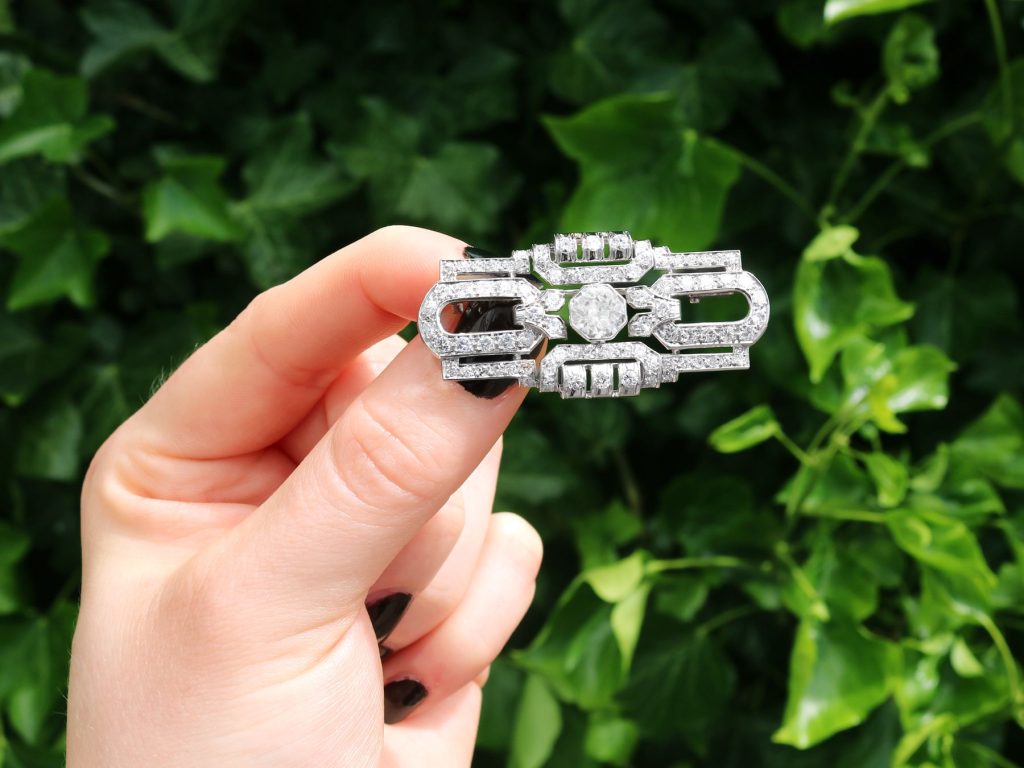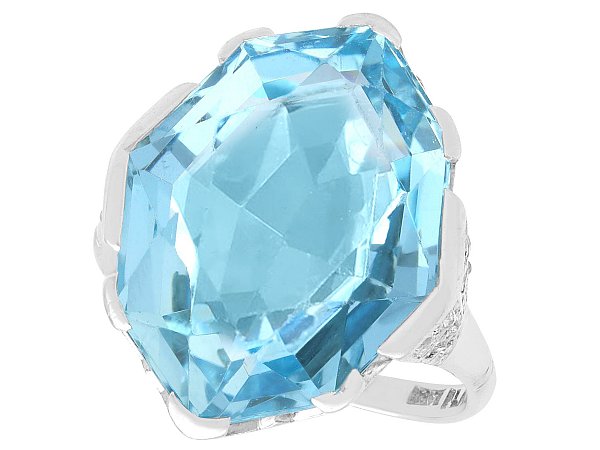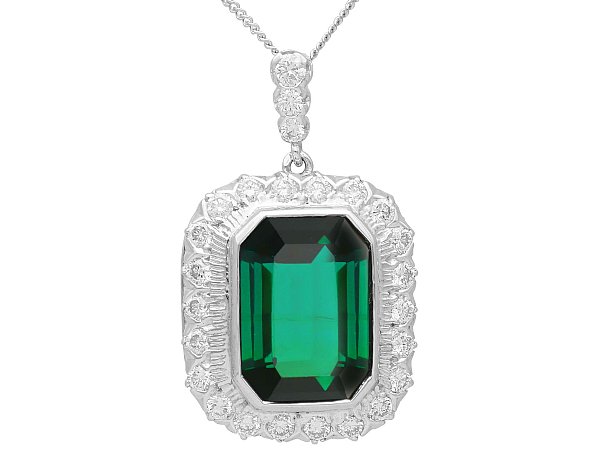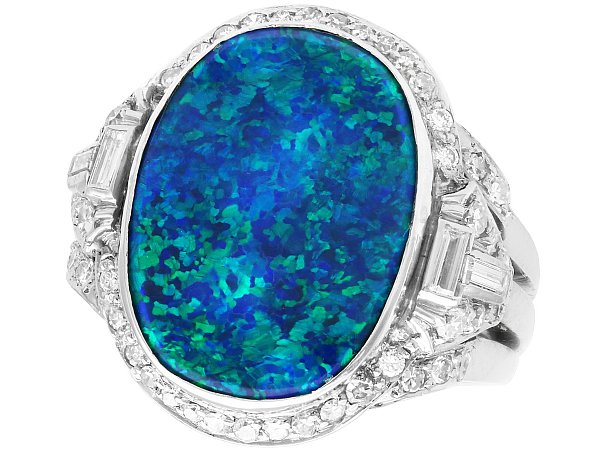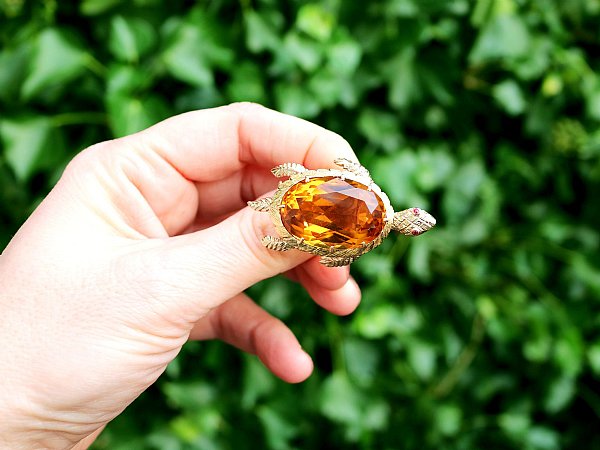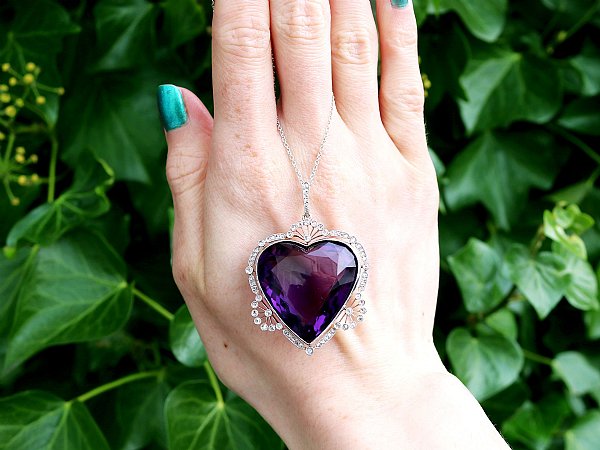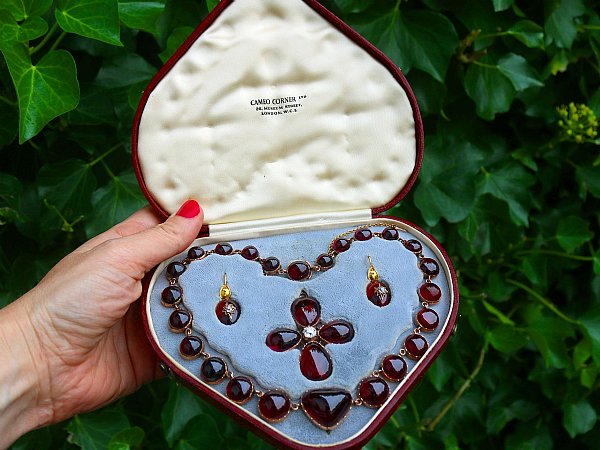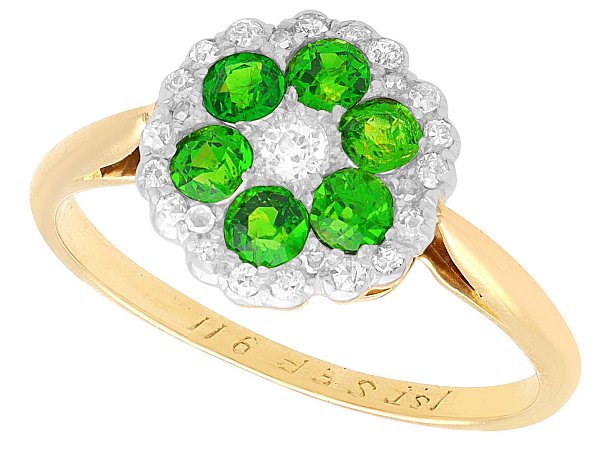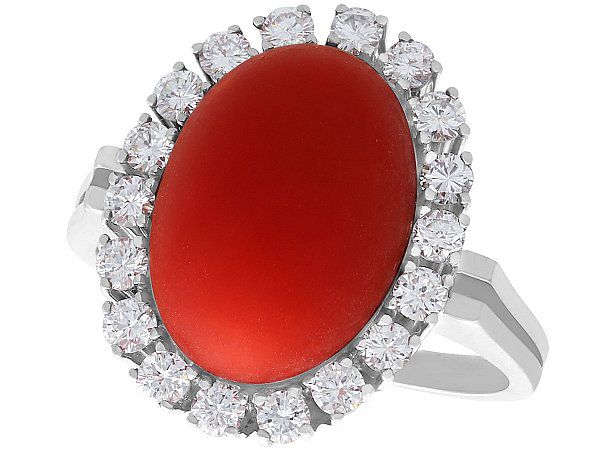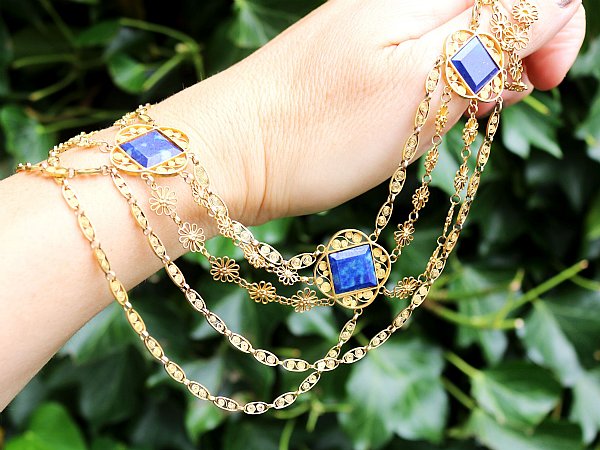Among the precious gemstones of the world, some are used in jewellery more often than others. These gemstones are selected for their beauty as well as their practicality. There are hundreds of different types of gemstones, in a vast array of colours, shapes, and sizes. This guide covers the twenty most common gemstones found at AC Silver and across much of the jewellery world.
Diamond
The diamond is perhaps the most easily-recognisable, well-known gemstone in the world. One of the hardest naturally-occurring materials in the world, diamonds are used for a range of luxury jewellery items. Their hardiness makes them suitable for everyday wear, and they are often utilised as accenting stones in cluster jewellery.
Perhaps the most recognised type of jewellery in the world, the engagement ring, is heavily associated with diamonds. They are the traditional stone for this type of jewellery because of their value, strength, and unique light-refracting abilities. Diamond solitaire engagement rings are one of the most-commonly purchased types of jewellery in the Western world.
Emerald
After diamonds, emeralds are usually the most expensive gemstones on the market. Emeralds are a form of the mineral beryl, which takes other gemstone forms in morganite and aquamarine. The inclusion of chromium and vanadium are what gives emerald its distinctive green colouring. This is gemstone has a 7.5 – 8 rating on the Mohs scale of hardness, making it suitable for regular wearing.
The most valuable emeralds are a bold and bright green colour. Colombia is the largest producer of emeralds, while Zambia is the second-largest. Emeralds that balance a high carat weight with a richly-saturated green hue will likely fetch the highest prices. These stones are the birthstone for those born in May.



Sapphire
Sapphires are one of the ‘big three’ coloured gemstones, with emeralds and rubies taking the other two slots. The blue gemstone is a variation of the corundum mineral, featuring trace levels of iron, titanium, magnesium, vanadium, or chromium to achieve its distinctive strong blues. These durable stones are well-suited to regular wear, being a popular choice for coloured engagement rings.
Sri Lankan sapphires, called Ceylon sapphires, are among the most highly-priced. The most expensive blue colour for sapphires is referred to as cornflower blue, and it is a bright, well-saturated blue. There are other colour variations for sapphires, including yellow and pink. The most expensive sapphires are padparadscha sapphires, which exhibit a distinctive pink-orange hue.
Ruby
Another variant of corundum, rubies owe their red tones to the levels of chromium present in the mineral. High value rubies exhibit rich red colouring that is intensely saturated. Rubies are a 9 on the Mohs scale, making them ideal for regular wearing. Only moissanite and diamonds are higher on the scale, meaning that rubies are the highest graded coloured gemstone.
There is a level of variation in the colouring of rubies, with some being light pink in tone while others are dark enough to be close to black. Bright red rubies with a colour called pigeon blood red are the most expensive. Initially, only bright rubies from Myanmar were given the title of pigeon blood red, and rubies of these origins are usually the most valuable.
Aquamarine
The second-most recognisable blue gemstones are aquamarines. This beryl variant sometimes receives heat treatments to affect its colour. These gemstones are relatively inexpensive as they are abundant, found in countries all around the world. Aquamarines can appear so pale to be almost clear, although they do not refract light as effectively as other clear gemstones like diamonds or moissanite.
The most expensive aquamarines have a richly saturated, light blue colour. Due to the relative affordability of these gemstones, it’s possible to get high carat stones for a significantly reduced price compared to other stones of the same size. Often, aquamarines are cut in angular cuts like the emerald, step, and marquise cuts to emphasize their colouring and brightness.
Pearl
Pearls are one of a few materials referred to as organic gemstones. They are technically not gemstones, as they are not minerals mined from the earth. Rather, pearls naturally form in the mantles of molluscs like clams. A piece of sediment is lodged in the mantle, and the clam crystalises around the sediment, using mother of pearl to create the stone.
Jade
This green gemstone is arguably the most expensive stone in the world. Buyers often pay more per gram for jade than other stones. These stones are most commonly found in South America and East Asia, being especially culturally significant in China and New Zealand. This gemstone is a 6 – 7 on the Mohs scale, making it somewhat unsuitable for everyday wear.
There are two forms of jade, jadeite and nephrite. Jadeite is the more precious of the two variants, only occurring in metamorphic rocks. Both types, however, have been used to create a range of jewellery and tools in many cultures. In Māori culture, for example, jade pendants called hei matau are passed down through generations, believed to help ancestors guide the living descendants.
Topaz
This is one of two birthstones assigned to those born in November. Topaz is most commonly a golden-yellow stone, although it can also be found in blue, pink, white, and more colours. The rarest colouring for topaz is called imperial topaz. This peach-pink coloration is naturally occurring, adding to the value of these stones.
Topaz is a relatively inexpensive gemstone in contrast with other precious stones used in luxury jewellery. For this reason, in combination with its highly varied colours, it is frequently used as a stand-in stone, closely resembling a range of other gems. The blue shades and yellow shades are the most common and economic, while rarer colours fetch higher prices.
Tourmaline
This gemstone is a crystalline silicate mineral featuring boron in addition to trace elements of aluminium, sodium, iron, and more elements. Another gemstone that is found in a wide range of colours, tourmalines are found in black, brown, red, yellow, green, pink, and a swathe of hues in between. These versatile stones sit between 7 – 7.5 on the Mohs scale, allowing them to be worn regularly, but not being suited to everyday wear.
Tourmalines are an excellent, cost-effective gemstone that suit many personal tastes due to their versatility. Pink tourmalines are among the most popular because of the brightness and saturation of their hues.
Opal
One of the most unique and popular gemstones, opals are the birthstone for October. A form of hydrated silica, opals have a water content that typically ranges from 6-10%. The opal family is split into precious and common opals. Precious opals display an iridescent play of colour referred to as ‘fire’, while common opals have a flat affect.
There are a few different colour names for opals, including white, green, harlequin, and black. Each of these types displays a rainbow-like range of colours in their ‘fire’ despite their colour names. It is clear to see by looking at the stones that the stones with a light base colour fall into the white category, while those with dark base colouration are black opals – the rarest kind.
Peridot
This stone is sometimes referred to as chrysolite and it is a variation of the mineral olivine. These stones are typically green in colour, with the range extending from yellow-green hues to olive greens and near-brown shades. These gemstones are popular for their earthy tones that are not very common in other stones.
Peridots are one of the only two gemstones not formed in the Earth’s crust, but rather the next layer down, in its mantle. The other gemstone formed this way is diamond. The birthstone for those born in August, this gemstone is found in igneous rock in a range of places around the world. Most peridot today is found in Arizona, and it is mined across much of the U.S.
Citrine
The counterpart to topaz as the November birthstone, citrine is a golden-yellow-brown variety of quartz. The majority of citrine is mined in Brazil, and it is sometimes referred to as the merchant’s stone. This nickname comes from the stones supposed abilities to increase the affluence of the wearer.
This gemstone is another with a restricted colour palette, ranging from pale yellows to rich near-brown colours. A lot of modern commercial citrines are not genuine citrines, but rather heat-treated amethysts. Natural citrines found in antique and vintage jewellery pieces are rare to find on the modern market.
Amethyst
The most recognisable purple gemstone in the fine jewellery world, amethysts are the birthstone for the month of February. Similar to citrine, amethysts are a variation of quartz. The name amethyst finds its roots in Ancient Greek, where it translates into meaning ‘not intoxicated’. This name links the gemstone to its mythos of being capable of preventing the wearer from drunkenness. Amethyst jewellery and drinking vessels embellished with amethysts were used in Ancient Greece in attempts to stave off drunkenness.
These stones exist within the purple colour spectrum, with the palest examples being a washed-out lilac colour, while some are dark enough to initially appear black. Some of these gemstones have undertones of different colours, typically blue or red.
Onyx
Onyx is a well-known black gemstone, a member of the chalcedony family. Onyx and agate are both similar-looking black stones which are varieties of layered chalcedony. The only difference between agate and onyx is how the bands in the stones are formed. The bands within agate are curved, while onyx features parallel bands.
These black gemstones are frequently carved to add texture to the jewellery and ornaments in which they are used. Featuring intense black colouring, onyx has an enduring popularity for its unique hue. Most gemstones with black shades feature strong undertones, while onyx is distinctively black.
Garnet
The birthstone for January, garnet is usually portrayed as a richly-saturated red gemstone. There is in fact a wide range of garnets, with different colours being attributed to each kind. While the name ‘garnet’ originates from the Middle English word ‘gernet’, meaning dark red, not all garnets are red.
Almandine and pyrope garnets are typically dark red in colour, while spessartine garnets are orange-yellow, and demantoid are green. Because of the popular red colour garnets are known for, they are often used as a more affordable alternative to rubies. The oldest garnet mine is located in New York, and produces roughly 90% of the garnets used throughout the world.
Chrysoberyl
This lesser-known precious gemstone is an aluminate of the element beryllium. Its distinctive milky green colouring allows it to stand out from most other green-toned gemstones. This stone is very saturated, being largely opaque. The name of this stone is rooted in the Greek for ‘a gold-white spar’, referencing the milky green-yellow tones commonly found in this stone.
Cabochon gemstone cuts – where the stone has a smooth surface rather than a faceted one – are popular for these stones. There is a variety of chrysoberyl referred to as cat’s eye chrysoberyl which features a vertical stripe of bright white at the centre of the stone. The opalescence in this variety makes them particularly appealing for enthusiasts.
Turquoise
Another opaque gemstone, turquoise is a hydrated phosphate of copper and aluminium. Its distinctive colour makes it a highly-desired stone. The most valuable turquoise, against which other examples are measured, is called the robin’s egg blue or sky blue in colour and originates in Iran. Having importance in cultures around the world, this gemstone is widely-regarded as a uniquely valuable stone.
Turquoise is one of the first gemstones to be mined, and many of its sites of origin have been depleted over the millennia. Found all over the world, ancient artifacts from many cultures feature turquoise, even the burial mask of Tutankhamun was inlaid with the gemstone. Browse our selection of turquoise jewellery including a stunning range of turquoise rings.
Coral
Another organic gemstone of sorts, coral originates from the marine invertebrate of the same name. The intense red colour found in coral is what makes it so desirable, and jewellery pieces with this colouration usually cost more than paler coral pieces. Red coral is very rare to find today because of overharvesting that largely occurred between the 17th – 20th centuries.
Today, buying new coral jewellery is considered somewhat gauche due to the scarcity of the stone as well as its environmental impact. Instead, it is recommended to buy antique and vintage jewellery. That way, the wearer can know that their coral jewellery had already been harvested, not affecting the state of the coral reefs in today’s oceans.
Zircon
The biggest misunderstanding about this stone is that it is a cheap alternative to diamonds. While zircon and cubic zirconia have similar names, the two stones are distinct from one another. Zircon belongs to the nesosilicate family of minerals, being commonly found in the Earth’s crust embedded in igneous and metamorphic rocks.
Despite being separate from cubic zirconia, zircon does have a high refractive index, meaning that it sparkles in much the same way as a diamond. The most valuable zircons are blue in colour, with a fine degree of saturation. Finding blue zircons with high carat weights today has become increasingly difficult, with the stone becoming rarer.
Lapis Lazuli
For millennia, lapis lazuli has been a highly treasured gemstone for its intense blue colouring. This metamorphic rock originates in the Middle East, being exported to Europe in the Middle Ages. Lapis, as the stone is often nicknamed, was used by many of the Renaissance era artists to create ultramarine pigment. Through grinding the stone into its powdered form, the pigment was created. This specific pigment was the most expensive of all blue shades because of this process.
Treasured by a range of ancient civilisations, this stone is valued for its beauty as much as its history. Often, the lapis used for jewellery features flecks of golden colouration, making it especially unique in its appearance. Lapis is easy to carve and manipulate, making it a popular choice for a range of decorative objects d’art as well as jewellery.
Although this is by no means an exhaustive list of the gemstones available on the market today, it does cover the majority of precious and semi-precious stones within the AC Silver collections. Selecting the right gemstone requires knowledge and passion, and it’s always recommended to do adequate research.

